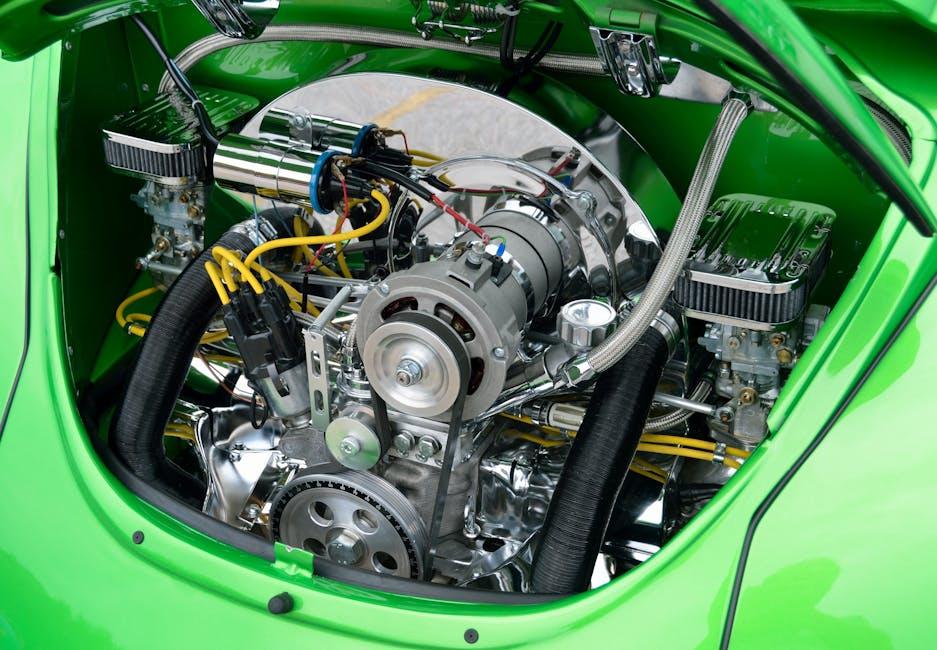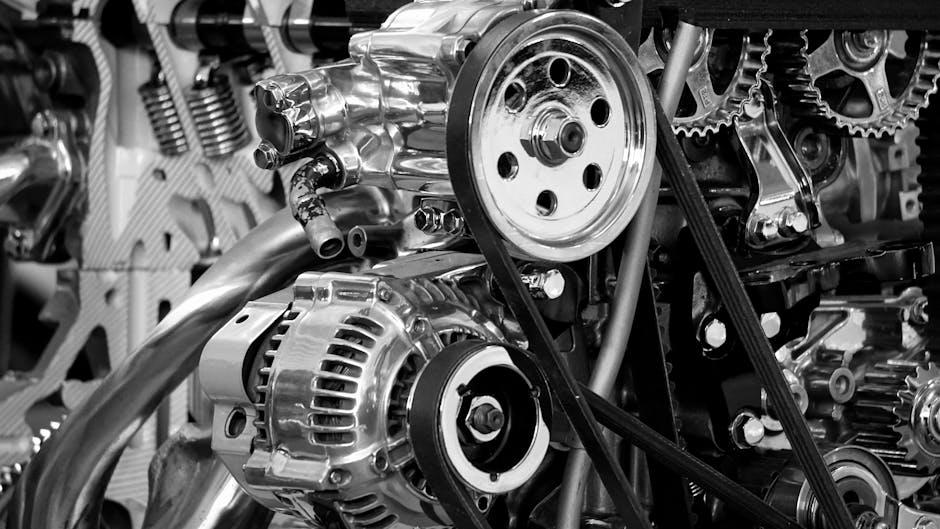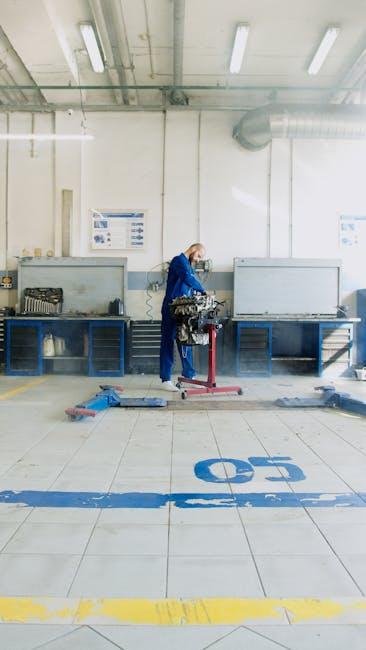Beneath the hum of every journey lies a crucial dialogue between man and machine—a dialogue most evident in the way our vehicles shift gears. Automatic and manual transmissions, each with their unique charm and complexity, demand different approaches to maintenance. As drivers, understanding these differences not only extends the life of our cars but also deepens the connection we share with them. In this article, we explore the nuances of automatic versus manual transmission upkeep, shedding light on what it takes to keep these mechanical hearts beating smoothly on the road ahead.
Table of Contents
- Understanding the Core Differences in Transmission Systems
- Key Maintenance Tasks Unique to Automatic Transmissions
- Critical Care Tips for Manual Transmission Longevity
- Signs Your Transmission Needs Immediate Attention
- Expert Recommendations for Extending Transmission Life
- Choosing the Right Maintenance Schedule for Your Transmission Type
- Q&A
- To Conclude

Understanding the Core Differences in Transmission Systems
At the heart of every vehicle lies the transmission system, acting as the essential mediator between the engine and the wheels, dictating how power is delivered. Automatic transmissions use a complex network of hydraulics and electronics to manage gear changes seamlessly, giving drivers a hands-off experience. On the other hand, manual transmissions engage the driver directly, relying on their skill to shift gears through a clutch pedal and gear stick. This fundamental difference creates diverse maintenance needs, where automatic systems often demand fluid changes and electronic checks, while manuals focus more on clutch health and cable adjustments.
When breaking down the maintenance specifics, consider these key distinctions:
- Fluid Type & Change Frequency: Automatic transmissions use specialized transmission fluid that typically requires periodic replacement to maintain smooth shifting. Manual transmissions usually rely on gear oil, which often has longer service intervals.
- Component Wear: Automatic units may face wear in torque converters and solenoids, whereas manuals are more prone to clutch plate and synchronizer ring wear.
- Diagnostic Complexity: Advanced sensors in automatics simplify troubleshooting but often need professional diagnostic tools; manuals rely on more straightforward mechanical inspection.
| Aspect | Automatic Transmission | Manual Transmission |
|---|---|---|
| Gear Shifting | Electronic/Hydraulic control | Driver-operated clutch and lever |
| Maintenance Focus | Fluid replacement & electronic diagnostics | Clutch replacement & cable adjustment |
| Repair Complexity | High, specialized tools required | Moderate, mechanically intuitive |

Key Maintenance Tasks Unique to Automatic Transmissions
Automatic transmissions rely heavily on specialized fluids and intricate hydraulic systems that require careful attention unlike manual gearboxes. One essential task is regularly checking and changing the transmission fluid, which lubricates internal components and ensures smooth gear shifts. Neglecting this can lead to overheating and accelerated wear, causing expensive repairs down the road. Additionally, the transmission filter must be replaced periodically to keep contaminants from circulating in the system and clogging vital passages. These maintenance steps help maintain optimal performance and extend the lifespan of the transmission.
Other unique maintenance tasks include:
- Inspecting the transmission cooler lines for leaks or blockages.
- Flushing the transmission system to remove old fluid and debris.
- Monitoring and updating software for electronically controlled transmissions.
| Task | Purpose | Recommended Frequency |
|---|---|---|
| Fluid Change | Lubricates and cools transmission | Every 30,000-60,000 miles |
| Filter Replacement | Removes contaminants | With fluid change |
| System Flush | Clears old fluid and debris | Every 60,000-100,000 miles |
| Software Updates | Optimizes electronic controls | As per manufacturer |

Critical Care Tips for Manual Transmission Longevity
Manual transmissions demand a bit more finesse and attention than automatics, but with some dedicated care, they can outlast many of their automatic counterparts. One of the key aspects is avoiding unnecessary clutch wear. For instance, resting your foot on the clutch pedal while driving creates friction and heat, rapidly wearing down the clutch material. Instead, use the clutch only when shifting gears and ensure the pedal is fully released when not in use to prolong its life. Another essential practice is to avoid riding the clutch or aggressive shifting, which can cause internal gear damage over time.
Maintaining fluid health is equally crucial. Manual gearboxes typically use specialized transmission fluid, which lubricates and cools the gears, reducing wear and tear. Regularly checking and changing this fluid according to the manufacturer’s schedule prevents premature breakdowns. Consider the following maintenance techniques for better transmission longevity:
- Check transmission fluid level and condition every 30,000 miles
- Use recommended grade fluids to match manual transmission requirements
- Adjust clutch cable or hydraulic clutch system to manufacturer specifications
- Avoid shifting gears abruptly or harshly to prevent gear damage
| Maintenance Action | Recommended Interval | Benefit |
|---|---|---|
| Transmission fluid change | Every 30,000 – 60,000 miles | Lubrication and cooling |
| Clutch adjustment | As needed or annually | Proper pedal engagement |
| Inspect for leaks | Every oil change | Prevents fluid loss/damage |

Signs Your Transmission Needs Immediate Attention
When your vehicle begins to hesitate or shudder during gear shifts, it’s a glaring signal that your transmission is struggling. Listen closely for any grinding noises or clunks while changing gears, as these auditory clues often foreshadow costly repairs if ignored. Another critical warning is fluid leaks; spotting red or brown oily spots beneath your car could mean your transmission fluid is escaping, leading to overheating and internal damage.
Pay attention to how your vehicle behaves when you engage the gears. If your car slips unexpectedly out of gear, or if there is a noticeable delay before movement after shifting, your transmission system may be failing. Erratic or unresponsive throttle response, coupled with a burning smell, also calls for immediate inspection. Below is a quick checklist of symptoms to watch for:
- Unusual noises during gear changes
- Delayed or slipping gear engagement
- Transmission fluid leaks or discoloration
- Burning smell near the transmission
- Dashboard warning lights related to transmission

Expert Recommendations for Extending Transmission Life
Maintaining a transmission in peak condition requires tailored care depending on whether your vehicle is equipped with an automatic or manual system. For automatics, regular fluid checks are crucial since this type relies heavily on hydraulic pressure and smooth fluid operation. Experts recommend changing the transmission fluid every 30,000 to 60,000 miles, but always verify with your manufacturer’s guidelines as newer models sometimes encourage longer intervals. Overlooking fluid quality can lead to overheating and premature wear, which can be costly to repair. Additionally, avoid harsh driving conditions like rapid acceleration or towing beyond capacity to minimize strain on the transmission components.
Manual transmissions, although simpler mechanically, call for consistent clutch and linkage inspections to avoid slippage and gear grinding, which degrade the entire system. Key practices include:
- Checking clutch fluid levels if hydraulic, to ensure precise engagement.
- Adjusting the clutch pedal to maintain proper free play and prevent premature wear.
- Using the correct gear oil for smooth shifting and lubrication of gear synchronizers.
Being proactive with these maintenance measures extends the lifespan of your transmission and improves overall driving comfort and vehicle reliability.
| Maintenance Task | Automatic Transmission | Manual Transmission |
|---|---|---|
| Fluid Change Interval | 30,000 – 60,000 miles | 30,000 – 50,000 miles |
| Clutch Inspection | Not Applicable | Every 15,000 miles |
| Shift Linkage Adjustment | Rarely Needed | Recommended Regularly |
| Recommended Oil Type | ATF (Automatic Transmission Fluid) | Manual Transmission Fluid or Gear Oil |

Choosing the Right Maintenance Schedule for Your Transmission Type
When managing the upkeep of your vehicle’s transmission, recognizing the unique needs of automatic and manual systems is essential. Automatic transmissions generally require more frequent fluid changes due to the complex hydraulic systems and torque converters that operate continuously under pressure. For these vehicles, adhering to manufacturer recommendations for fluid checks and replacements every 30,000 to 60,000 miles can prevent costly repairs and ensure smooth gear shifts. Additionally, pay attention to signs like sluggish responses or unusual noises, which indicate a need for early maintenance.
In contrast, manual transmissions, which utilize a clutch and mechanical linkage, typically have less demanding maintenance schedules. Their gear oils often last longer, sometimes up to 60,000 to 100,000 miles, making routine inspections of the clutch system and transmission fluid the main focus. Drivers should also watch for clutch slippage or difficulty in shifting gears. Below is a simple comparison table to help visualize the maintenance intervals:
| Transmission Type | Maintenance Focus | Recommended Fluid Change Interval |
|---|---|---|
| Automatic | Transmission fluid, filter, torque converter | 30,000 – 60,000 miles |
| Manual | Gear oil, clutch inspection | 60,000 – 100,000 miles |
Q&A
Q&A: Automatic vs Manual Transmission Maintenance
Q1: What is the key difference between maintaining an automatic transmission and a manual transmission?
A1: The main difference lies in complexity and fluid management. Automatic transmissions rely heavily on specialized transmission fluid that must be checked and replaced regularly to ensure smooth gear shifts. Manual transmissions, on the other hand, typically use gear oil and require less frequent fluid changes but demand more attention to the clutch system’s wear and cable or hydraulic linkage adjustments.
Q2: How often should automatic transmission fluid be changed?
A2: It depends on the manufacturer’s recommendations and driving conditions, but generally, automatic transmission fluid should be replaced every 30,000 to 60,000 miles. Neglecting this can lead to overheating, slipping gears, and costly repairs.
Q3: What common manual transmission maintenance tasks are often overlooked?
A3: Many drivers forget to check the clutch’s condition until slipping or difficulty shifting arises. Adjusting the clutch cable tension, inspecting linkage, and changing the transmission fluid periodically are essential yet frequently neglected tasks.
Q4: Can a manual transmission be damaged by improper maintenance more easily than an automatic?
A4: Both transmissions can suffer from neglect, but manual transmissions might show wear more immediately through clutch degradation or synchro gear damage. Automatic transmissions might mask problems until they become severe due to their complexity.
Q5: Are manual transmissions cheaper to maintain overall?
A5: Generally, manual transmissions have fewer components and simpler designs, potentially lowering maintenance and repair costs. However, clutch replacements can be expensive, depending on usage and driving habits.
Q6: How does driving style affect transmission maintenance?
A6: Aggressive or improper shifting in manuals can accelerate clutch wear, while frequent stop-and-go traffic increases strain on automatic transmissions. Smooth, mindful driving tends to extend the life of both types.
Q7: Is it necessary to perform transmission fluid flushes on automatics?
A7: Transmission fluid flushes can help remove accumulated debris and contaminants, but they must be done cautiously and as per manufacturer guidelines. Over-flushing or using incorrect fluids can cause damage.
Q8: What signs indicate transmission maintenance is needed?
A8: For automatics: delayed shifting, gear slipping, strange noises, or fluid leaks. For manuals: difficulty shifting, grinding sounds, clutch slipping, or a burning smell.
Q9: Are there any technological innovations impacting transmission maintenance?
A9: Yes, modern automatics often feature sealed transmissions with “lifetime” fluids, reducing routine service needs but complicating repairs when problems arise. Some manuals now include dual-clutch systems, blending manual control with automatic convenience, which require specialized maintenance.
Q10: Should vehicle owners attempt transmission maintenance themselves?
A10: Basic checks like fluid level inspection are doable for DIY enthusiasts, but most transmission maintenance and repairs require professional expertise due to technical complexity and specialized tools, especially for automatics.
To Conclude
In the evolving dance between automatic and manual transmissions, maintenance plays the starring role in longevity and performance. Whether you favor the seamless shifts of an automatic or the tactile control of a manual, understanding the unique care each requires ensures your journey remains smooth and reliable. By staying attentive to your transmission’s needs, you not only safeguard your vehicle’s health but also preserve the joy and freedom that come with every mile driven. After all, the road ahead is best enjoyed when your car is in top gear—no matter which transmission you choose.

